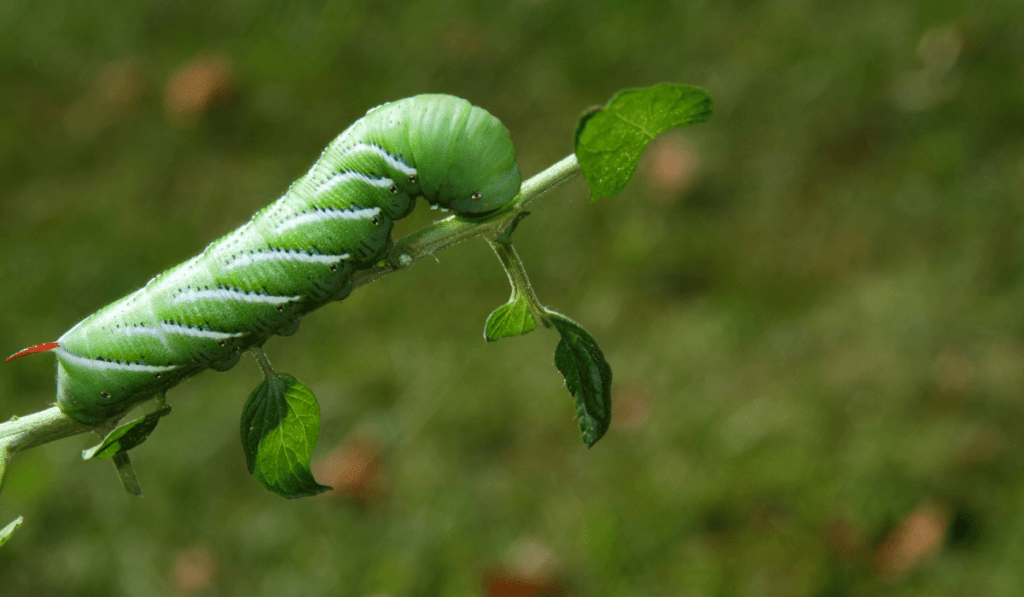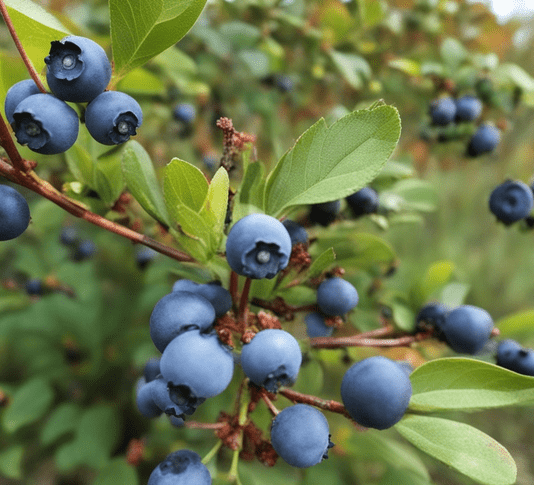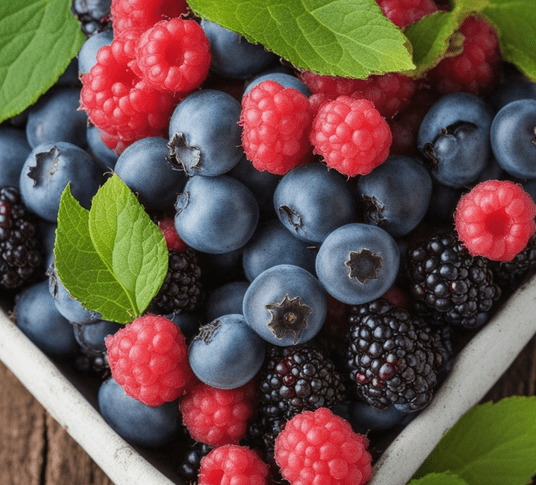Ever wondered what pests might be lurking in your blueberry orchard, threatening your harvest? In our latest blog post, we unravel the mystery behind seven common pests that could impact your blueberry bushes. From identifying these intruders to mastering effective control strategies, dive into this guide to safeguard your blueberry crop. Equip yourself with knowledge and actionable insights to ensure a pest-free orchard and a bountiful harvest. Your pathway to a thriving blueberry garden starts here!
Why Understanding Blueberry Pests is Crucial
Blueberry pests can wreak havoc on your precious harvest, affecting both quantity and quality. This section delves into the importance of comprehending these pests and the implications of their presence in your blueberry orchard.
The Impact of Pests on Blueberry Plants
Explore the various ways pests can harm blueberry plants, from nibbling on leaves to transmitting diseases. Understanding the potential damage helps growers appreciate the urgency of effective pest management.
The Importance of Proactive Pest Management
Proactivity is key in the battle against pests. Learn why adopting preventative measures is more effective than reactive strategies and how it contributes to the overall health of your blueberry bushes.
Common Blueberry Pests: Identification and Characteristics
Pest #1: Aphids
1. Identification and Appearance
Uncover the distinct features that characterize aphids and how to spot them on your blueberry plants.
2. Damage Caused by Aphids
Delve into the ways aphids harm blueberry bushes, including stunted growth and distorted foliage.
3. Signs of Aphid Infestation
Learn to recognize early indicators of aphid infestation, allowing for swift intervention.
Pest #2: Blueberry Maggots
1. Lifecycle and Behavior
Understand the fascinating lifecycle of blueberry maggots and how their behavior impacts blueberry crops.
2. Symptoms of Blueberry Maggot Infestation
Explore the visible symptoms that suggest the presence of blueberry maggots in your orchard.
3. Detecting Maggot Presence
Equip yourself with methods to detect blueberry maggots early, preventing extensive damage.
Pest #3: Spider Mites
1. Recognizing Spider Mites
Learn to identify spider mites and differentiate them from beneficial mites in your blueberry patch.
2. Effects on Blueberry Plants
Understand the negative effects of spider mite infestations, including webbing and leaf discoloration.
3. Notable Indicators of Spider Mite Presence
Familiarize yourself with signs that indicate the presence of spider mites, allowing for timely intervention.
Pest #4: Japanese Beetles
1. Characteristics of Japanese Beetles
Explore the distinctive characteristics of Japanese beetles and how they stand out in the blueberry orchard.
2. Impact on Blueberry Foliage
Understand how Japanese beetles damage blueberry foliage and compromise the overall health of the plant.
3. Early Signs of Japanese Beetle Infestation
Identify the early signs that Japanese beetles have invaded your blueberry patch, facilitating prompt action.
Pest #5: Blueberry Gall Midge
1. Gall Midge Lifecycle
Dive into the lifecycle of blueberry gall midges and how their development correlates with blueberry growth stages.
2. Gall Midge-Induced Damage
Explore the damage inflicted by gall midges on blueberry plants, emphasizing the importance of prevention.
3. Identifying Gall Midge Infestation
Learn effective methods to identify the presence of gall midges, preventing widespread damage.
Pest #6: Thrips
1. Thrips Behavior and Appearance
Understand the behavior and appearance of thrips, common pests that can affect blueberry crops.
2. Damage Caused by Thrips
Explore the damage caused by thrips, including stippling and distorted growth in blueberry plants.
3. Signs of Thrip Infestation
Recognize the early signs of thrip infestation, allowing for targeted pest control measures.
Pest #7: Blueberry Flea Beetle
1. Blueberry Flea Beetle Characteristics
Explore the characteristics of blueberry flea beetles and how they distinguish themselves in the blueberry orchard.
2. Impact on Blueberry Plants
Understand the impact of blueberry flea beetles on plant health, particularly on leaves and shoots.
3. Detecting Blueberry Flea Beetle Presence
Equip yourself with methods to detect the presence of blueberry flea beetles, facilitating prompt intervention.
E. Natural Predators: Encouraging a Balanced Ecosystem
Understand the crucial role of natural predators in controlling pest populations and fostering a harmonious ecosystem within your blueberry orchard.
1. Introducing Predatory Insects
Delve into the world of predatory insects and their effectiveness in keeping common pests at bay. Identify and introduce these beneficial insects to create a natural defense system.
2. Attracting Birds as Pest Controllers
Explore the symbiotic relationship between birds and blueberry plants. Learn how to attract bird species that feed on pests, contributing to pest management while adding biodiversity to your orchard.
3. Beneficial Nematodes: Tiny Warriors
Uncover the microscopic warriors in the form of beneficial nematodes. Understand how these tiny organisms can be employed to target and control specific pests, enhancing the overall health of your blueberry bushes.
F. Sustainable Pest Management Practices
Embrace sustainable pest management practices that minimize environmental impact while effectively controlling pest populations.
1. Integrated Pest Management (IPM)
Dive into the principles of Integrated Pest Management (IPM) and how it offers a holistic approach to pest control. Understand the importance of combining biological, cultural, and mechanical control methods for sustainable results.
2. Crop Rotation Strategies
Explore the benefits of crop rotation in preventing pest build-up. Learn how strategic planting rotations disrupt the life cycles of pests, reducing the likelihood of infestations.
3. Companion Planting for Pest Control
Discover the art of companion planting and how certain plants can act as natural deterrents to pests. Implementing companion planting strategies enhances pest resistance and overall crop health.
Responding to Pest Infestations: Effective Control Measures
Organic Pest Control Solutions
Explore environmentally friendly, organic pest control solutions that target specific pests without compromising the health of your blueberry plants.
1. Neem Oil: Nature’s Pest Repellent
Understand the benefits of neem oil as a natural pest repellent. Learn how to properly use neem oil to control pests while maintaining a safe and eco-friendly orchard environment.
2. Homemade Pest Control Sprays
Discover easy-to-make, homemade pest control sprays using common household ingredients. These DIY solutions provide an alternative to commercial pesticides.
3. Beneficial Fungi: Controlling Pests Naturally
Explore the role of beneficial fungi in suppressing pest populations. Learn about fungi-based products that serve as effective biopesticides.
Chemical Pest Control: Choosing Wisely
Understand the considerations and guidelines for using chemical pest control methods when organic options prove insufficient.
1. Selective Pesticides: Targeting Specific Pests
Explore selective pesticides that target specific pests while minimizing the impact on beneficial insects and the environment.
2. Proper Application Techniques
Learn the importance of proper pesticide application techniques, including timing and dosage, to maximize effectiveness while minimizing negative consequences.
3. Adhering to Safety Guidelines
Understand the importance of safety when using chemical pest control methods. Adhere to recommended guidelines to protect yourself, the environment, and the overall health of your blueberry orchard.
Regular Monitoring and Early Intervention
A. Establishing a Monitoring Routine
Learn the significance of regular monitoring in pest management. Implement a monitoring routine to detect pest presence early and prevent infestations.
1. Visual Inspections and Traps
Discover effective visual inspection techniques and trap systems to monitor pest activity. Early detection allows for timely intervention, preventing widespread damage.
2. Utilizing Technology for Monitoring
Explore modern technologies, such as sensors and data analytics, to enhance pest monitoring efficiency. Leverage data-driven insights to make informed decisions for pest control.
Early Intervention Strategies
Understand the importance of swift action in the face of pest infestations. Learn effective early intervention strategies to halt pest spread and minimize damage.
1. Natural Predatory Insect Release
Deploy natural predators strategically to contain pest populations and restore the natural balance in your orchard.
2. Targeted Organic Treatments
Implement targeted organic treatments as soon as pests are detected. Utilize environmentally friendly solutions to address specific pest threats.
3. Collaborative Pest Control Efforts
Engage in collaborative efforts with local agricultural extensions, fellow growers, and pest control professionals. Share insights and stay informed about emerging pest issues and effective control measures.
Conclusion:
In blueberry cultivation, managing pests is crucial for a thriving orchard. As stewards of our plants, it’s our responsibility to understand the impact pests can have on harvests.
This guide unravels common pests, from aphids to the blueberry flea beetle. Armed with knowledge about identification, behavior, and harm, growers can navigate pest management.
Proactive pest management is vital, ensuring overall bush health for sustainable harvests. Natural predators like insects, birds, and beneficial nematodes maintain a balanced ecosystem.
Sustainable practices, from IPM to crop rotation, respect nature while safeguarding crops. Organic and chemical solutions, such as neem oil and selective pesticides, offer alternatives.
Regular monitoring with inspections, traps, and technology is the first line of defense. Early detection allows swift intervention, using natural predators, organic treatments, and collaborative efforts.
successful blueberry cultivation is about a harmonious relationship with nature. Embracing a proactive, sustainable, and informed pest management approach protects orchards and contributes to the broader ecosystem. Happy growing!



